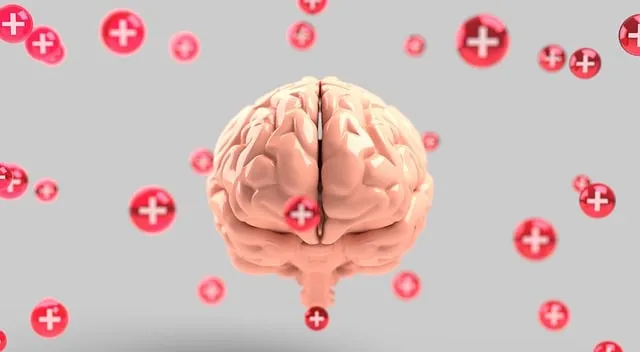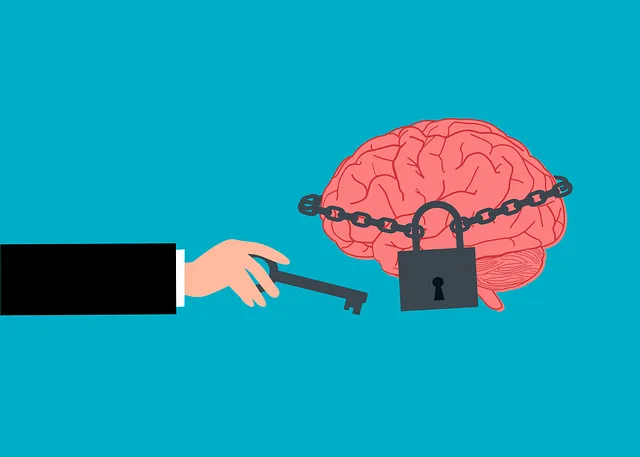Kaiser Permanente employs a multi-faceted approach to evaluating its behavioral health services, integrating quantitative data analysis with qualitative feedback from clients and healthcare providers. This method includes Community Outreach Programs, Crisis Intervention Guidance, and Stress Reduction Methods, ensuring comprehensive assessments that impact client outcomes. By adopting Golden Standard Assessment Tools, they can precisely track progress and enhance program integration of compassion cultivation practices. Combining qualitative and quantitative methods offers a holistic understanding of program outcomes, with KPIs like client satisfaction ratings and retention rates indicating success. Continuous improvement, driven by participant feedback and data analysis, ensures programs like Trauma Support Services remain relevant and impactful.
Mental wellness program evaluations are crucial for measuring effectiveness and driving continuous improvement. This article explores methodologies used by industry leaders like Kaiser Permanente in their behavioral health services reviews. We delve into the significance of Golden Standard Assessment tools, examining both qualitative and quantitative evaluation methods. Key Performance Indicators (KPIs) are scrutinized as metrics for success, while data analysis techniques are highlighted for fostering a culture of continuous improvement within mental wellness initiatives, mirroring Kaiser Permanente’s commitment to excellence in behavioral health services.
- Understanding Kaiser Permanente's Approach to Behavioral Health Services Reviews
- The Role of Golden Standard Assessment Tools in Mental Wellness Programs
- Qualitative vs Quantitative Evaluation Methods: A Balanced Perspective
- Measuring Success: Key Performance Indicators for Mental Wellness Initiatives
- Continuous Improvement: Incorporating Feedback and Data Analysis Techniques
Understanding Kaiser Permanente's Approach to Behavioral Health Services Reviews

Kaiser Permanente takes a comprehensive approach to evaluating its behavioral health services, with a focus on continuous improvement and client-centered care. Their method involves a multi-faceted review process that combines quantitative data analysis with qualitative feedback from both clients and healthcare providers. This dual-pronged strategy ensures a holistic understanding of service delivery.
The Golden rule for Kaiser Permanente is to integrate Community Outreach Program Implementation, Crisis Intervention Guidance, and Stress Reduction Methods into their evaluations. By doing so, they not only assess the effectiveness of these services but also measure their impact on client outcomes and overall wellness. This strategic evaluation enables Kaiser Permanente to refine and enhance their behavioral health programs, ensuring they meet the evolving needs of their diverse clientele.
The Role of Golden Standard Assessment Tools in Mental Wellness Programs

In evaluating mental wellness programs, the use of Golden Standard Assessment Tools plays a pivotal role, especially when considering models like those implemented by Kaiser Permanente behavioral health services reviews. These tools provide a consistent and reliable framework for measuring the effectiveness of interventions aimed at improving emotional well-being promotion techniques and crisis intervention guidance. By adopting standardized assessments, program managers can accurately track progress, identify areas needing improvement, and ensure that compassion cultivation practices are effectively embedded in the care paradigm.
This approach is particularly beneficial as it allows for data-driven decision-making, enabling professionals to adapt strategies based on evidence gathered from these golden standards. Through rigorous evaluation using these tools, mental wellness programs can enhance their impact, better serve clients, and contribute to a more comprehensive understanding of effective therapeutic practices in promoting overall emotional well-being.
Qualitative vs Quantitative Evaluation Methods: A Balanced Perspective

The evaluation of mental wellness programs can be approached through Qualitative or Quantitative methods, each offering unique insights into program effectiveness. Qualitative methods, often employed by organizations like Kaiser Permanente in their behavioral health services reviews, delve deep into participants’ experiences and perceptions. This approach is particularly useful for understanding the emotional well-being promotion techniques, mood management strategies, and crisis intervention guidance implemented within programs. By exploring individuals’ stories and feedback, researchers can uncover nuanced details about program impact that quantitative measures might miss.
On the other hand, Quantitative evaluation methods provide a broader perspective by collecting numerical data from large samples. These methods are instrumental in identifying trends, measuring the reach of interventions, and assessing the overall success of mental wellness programs. Balancing these two approaches allows for a comprehensive understanding of program outcomes, ensuring that both subjective experiences and objective measures are considered. For instance, Golden’s research has shown that combining qualitative insights with quantitative data can offer a more holistic view, enabling program developers to make informed adjustments and enhance service delivery.
Measuring Success: Key Performance Indicators for Mental Wellness Initiatives

Measuring success is a critical aspect of evaluating any mental wellness program, and for initiatives aimed at improving behavioral health, specific Key Performance Indicators (KPIs) can provide valuable insights. These KPIs should align with the overall goals and objectives of the program, offering a comprehensive view of its impact on participants’ mental wellness. For instance, Kaiser Permanente behavioral health services reviews often highlight metrics such as client satisfaction ratings, retention rates, and improvements in clinical outcomes.
One key performance indicator could be the level of self-awareness achieved by individuals participating in the program. Self-Awareness Exercises, for example, might show significant progress in participants’ ability to recognize and manage their emotions, leading to improved mental health. Similarly, Crisis Intervention Guidance can be measured through the reduction in crisis incidents over time, indicating better coping strategies among beneficiaries. Emotional Healing Processes may also be tracked, demonstrating long-term improvements in mental wellness and overall well-being.
Continuous Improvement: Incorporating Feedback and Data Analysis Techniques

Continuous improvement is a cornerstone of effective mental wellness program evaluation, and organizations like Kaiser Permanente behavioral health services reviews highlight this principle. By incorporating feedback from participants and employing data analysis techniques, programs can identify areas for enhancement and tailor their approaches to better serve individuals seeking support, such as Trauma Support Services or Anxiety Relief initiatives.
Regular review processes, coupled with robust data collection methods, enable the development and refinement of Mental Wellness Coaching Programs. Golden insights derived from these analyses can drive program changes, ensuring that services remain relevant, accessible, and impactful. This iterative process fosters a culture of learning and adaptation, ultimately contributing to improved outcomes for those engaging in these initiatives.
Evaluating mental wellness programs is a multifaceted process that requires a blend of qualitative and quantitative methods, as demonstrated by Kaiser Permanente’s comprehensive approach to behavioral health services reviews. Utilizing Golden Standard Assessment tools ensures consistent and reliable measurements, while considering both subjective experiences and objective data allows for a holistic understanding of program effectiveness. By focusing on key performance indicators and continuously incorporating feedback and data analysis techniques, mental wellness initiatives can be refined to better support individuals in need, ultimately enhancing overall well-being.






